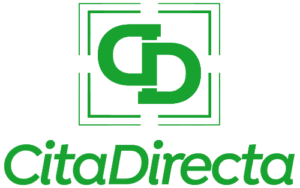The landscape of tax management is developing, and the owner of small businesses should pay attention. The IRS’s Electronic Tax Management Advisory Committee (ETAAC) recently released annual reports in 2025, and has 14 recommendations to improve security, simplify the process, and improve taxpayer services. These changes can directly affect the way small businesses submit taxes, interact with IRS, and manage financial reporting.
Among the major recommendations of the IRS, requests for updated tax return forms are prominent as the potential to improve security measures for fraud and identity theft. IRS commissioner Billy Long emphasizes the importance of increasing digital interactions, saying, “Increasing digital trading is one of the main goals of internal profit services.” In the case of small businesses that are often operated as resources resources, the transition to digital can save time and often alleviate the risk of errors along with manual processes.
This report also recommends that the IRS can often be confused with the file by reviewing and modifying the list of modernized e-files (MEF) rejection codes and descriptions. When this code becomes clearer, the IRS aims to help small business owners avoid unnecessary complications when submitting returns. Simplified communication for these processes can significantly reduce the stress and time burden of small companies during the tax season.
The committee’s recommendations are expanded to encourage better information sharing between IRS, state organizations and industrial partners. This reduces the more cohesive regulatory environment and bureaucratic red tape for the owners of small businesses. For example, if the IRS collaborates closely with the state tax authorities, it can ultimately improve operational efficiency by simplifying the approval process for the state -related business tax issues.
Among the recommendations for Congress, ETAAC is defending tax simplification while establishing tax policies. Small business owners often find that they are buried in accordance with complex tax regulations, so the movement to simplification can reduce the cost of compliance and improve the overall productivity. In addition, if the parliament grants the IRS the authority to regulate non -qualified tax refund readers, it can protect the owner of small businesses from the potential exploitation or incompetence of the tax preparation service to increase the standards of the industry as a whole.
However, there is a practical task to implement these recommendations. It is important to require predictable funds for IRS because consistent resources direct the institution’s ability to effectively implement these improvements. Small companies should know that shortages of funds can delay the progress of other recommendations that affect digital innovation and other services.
In addition, increasing digital functions can provide a lot of advantages, but small business owners who are not technically versatile can create barriers. Mainly, to convert to digital systems, it may require education and investment in technology that can not be easily affected by small operations.
ETAAC’s focus on technology modernization indicates the need for small business owners to be ahead of the curve. To adapt to the new system, time may require time and external support may be required, but this adaptation can ultimately lead to more simplified reports and compliance processes.
In short, the recommendation of ETAAC is a double -edged sword for small business owners. The IRS promises more security, efficiency, and support, but it also has the potential for initial obstacles in terms of adaptation and ongoing need for education.
Overall, this report reminds us that the owner of small business owners is alert and actively maintaining the changes in tax laws and administration. Watch out for this development makes it a better position for small businesses to use new systems and processes, ultimately the tax seasons can lead to a softer tax season.
To access detailed insights and full reports, visit the original release. IRS ETAAC Report 2025.
Image through ENVATO


